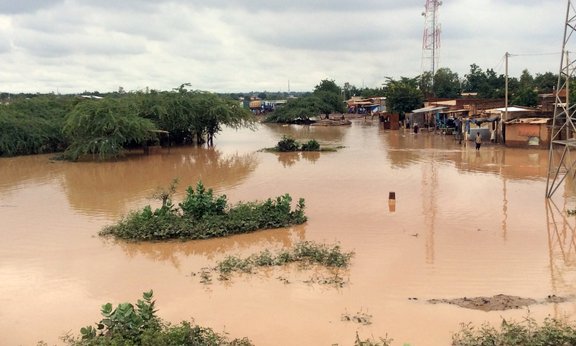Mapping the effects of mostly small-scale but extreme rainfall events in global climate models poses major challenges. Computer models that are used to simulate the global climate, for example in the reports of the Intergovernmental Panel on Climate Change (IPCC), usually have a resolution of grids with a scale of approximately 100x100 kilometres. "Most clouds, air swirls and mountains are smaller than 100 kilometres, so they are not completely 'seen' in many climate models – this also means that thunderstorms and associated rainfall extremes cannot be simulated in a realistic way. The principle is comparable to high- and low-resolution television: In HD, you see every blade of grass on a football field, while on an old TV you might just recognise the ball," explains Dr. Cornelia Klein from the Department of Atmospheric and Cryospheric Sciences. " Improved computing power finally makes first high-resolution climate projections possible, which are able to ‘see’ storms. Using such a high-resolution projection for the Sahel as an example, we have worked out a method to bring together the best of the climate modelling and observed data worlds , providing improved estimates for probable intensities of future extreme rainfall events." The results of the study have recently been published in the journal Environmental Research Letters and are a collaboration between researchers from the University of Innsbruck and the UK Centre for Ecology & Hydrology (UKCEH). Reliable information on future extreme rainfall events is of great importance for areas such as urban development, water and energy infrastructure, flood resilience measures and sustainable agricultural practices. "This is especially relevant for regions that are very vulnerable to extreme weather events - such as in West Africa," says Klein.
Models and observation
Using the Sahel as an example, the team devised a statistically based method that combines the projection of a high-resolution model of the British meteorological service "Met Office" for the African continent with a large number of commonly-used global climate models and observational data. These "observational data" include information on cloud formations and rainfall intensities from satellite data as well as humidity and wind measurements. These factors are essential for the occurrence of severe thunderstorms, but can only be captured and predicted accordingly with high-resolution data. "Our results show that the projected hourly precipitation during extreme weather events in the Sahel towards the end of this century could be up to 25 per cent higher than currently predicted by traditional climate models," explains the atmospheric scientist. “From observational data and the high-resolution climate model we were able to learn how rainfall intensities from thunderstorms react to atmospheric changes in humidity or wind. We then used this knowledge to translate projected atmospheric changes from a large number of traditional climate models into extreme rainfall changes. The crux here is that we consider large-scale atmospheric changes in traditional climate models as at least plausible, which cannot be said about their rainfall extremes.” "With our calculations, we can create a better risk assessment for future rainfall extremes by deriving more realistic, process-based rainfall changes for a large number of climate simulations."
Besides the University of Innsbruck in Austria, the study involved the UKCEH, the University of Leeds, the Met Office and the National Centre for Earth Observation in the UK, the Universities of Toulouse, Grenoble Alpes and Sorbonne in France,and Félix Houphouët Boigny University in Ivory Coast.

